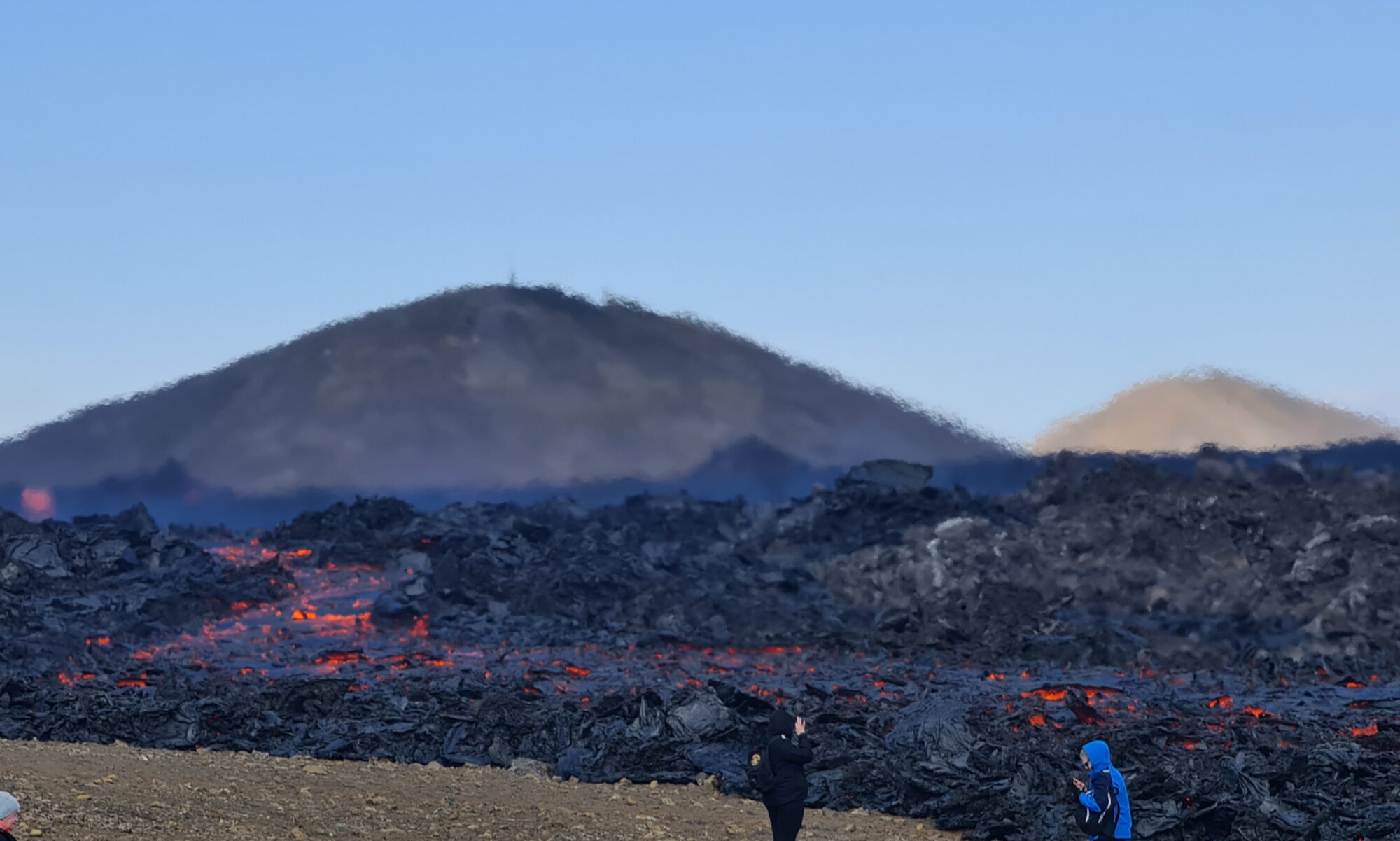Early morning of 7. January 2023 an earthquake swarm took place in Brennisteinsfjöll volcano. All of the earthquakes are small in magnitude and largest earthquake had a automatic magnitude of Mw1,0. Depth of this earthquakes is from 7 km and down to 9,5 km depth.
Continue reading “Earthquake swarm in Brennisteinsfjöll volcano”
Ongoing earthquake swarm in Reykjanes volcano (close to Reykjanestá)
Today (6. January 2023) an earthquake swarm started in Reykjanes volcano close to Reykjanestá area. Largest earthquake had a magnitude of Mw3,0 at 00:31 UTC. Other earthquake have been smaller in magnitude.
Continue reading “Ongoing earthquake swarm in Reykjanes volcano (close to Reykjanestá)”
Earthquake swarm in Fagradalsfjall volcano
Today (27. December 2022) an earthquake swarm took place in Fagradalsfjall volcano. This earthquake swarm was small in magnitude, as most earthquake swarms are in Fagardalsfjall volcano.
Continue reading “Earthquake swarm in Fagradalsfjall volcano”
Earthquake swarm 3 km north of Grindavík town
Today (19. December 2022) and yesterday (18. December 2022) an earthquake swarm took place 3 km north of Grindavík town in the Reykjanes volcano. Largest earthquake had a magnitude of Mw2,9 and was felt in Grindavík. Earthquakes with magnitude Mw2,0 are felt in Grindavík, possibly even smaller earthquakes. At the writing of this article, this earthquake swarm is ongoing but weather is blocking almost all of the automatic earthquake detection.
Continue reading “Earthquake swarm 3 km north of Grindavík town”
Earthquake swarm in Reykjanes volcano (3-December-2022)
Today (03-December-2022) at 12:49 UTC an earthquake with magnitude of Mw3,5 at 7,0 km depth. This was the largest earthquake in the swarm. Around of 40 earthquakes took place at the writing of this article. There are no reports about the largest earthquake was felt in nearby populated areas.
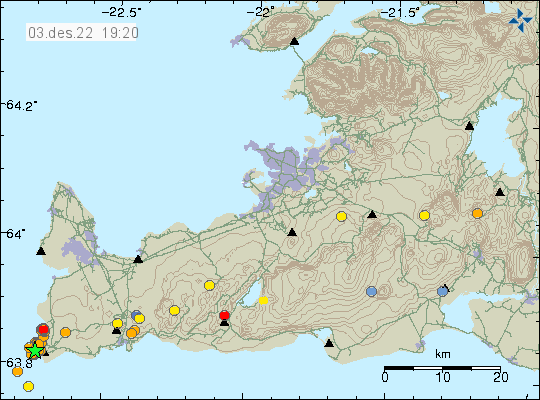
This earthquake activity suggest that a new inflation period is about to start in this part of the Reykjanes peninsula and Reykjanes ridge. There has been rather quiet time in Fagradalsfjall volcano and Reykjanes volcano since August when last eruption took place in Fagradalsfjall volcano. Reykjanes volcano has not erupted so far, but has continued activity of magma injection into the crust. When that is going to result in a eruption is impossible to know.
Possible dyke intrusion in Fagradalsfjall volcano
Early morning today (10-November-2022) an swarm of earthquakes took place slightly north of the place where the eruption in August 2022 took place in Fagradalsfjall volcano. This possible dyke intrusion was small and only lasted for about 1 hour before it stopped. Depth of the earthquakes was from 5 km to 7 km.
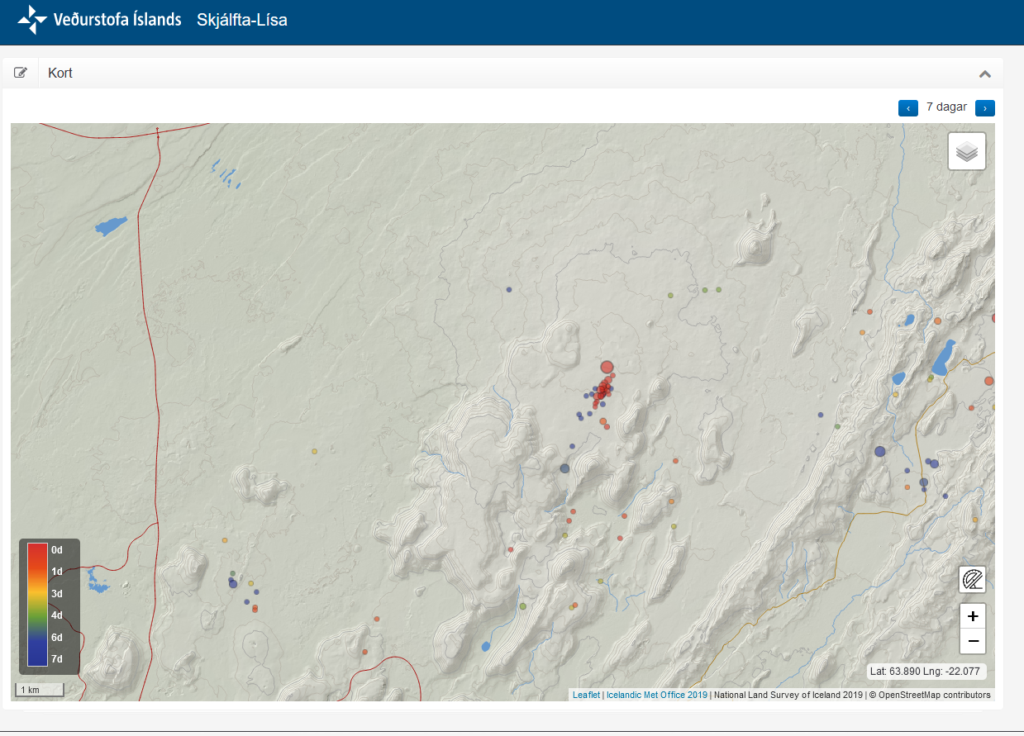
This activity might give a clue on in what area next eruption is going to take place in Fagradalsfjall mountain. Based on earlier eruption there won’t be any warning before an eruption earthquake swarm starts. In August that eruption started with a minor earthquake swarm, created from a dyke intrusion that was happening. In the hours before an eruption starts there’s going to be a strong earthquake swarm, based on what happened just before the eruption in August. It is interesting if the eruption activity moves north-east, rather than south-west. Why that happens, if it does so, is not something I am clear on why happens.
Change in the earthquake activity in close to Herðubreið mountain
Sometime yesterday (24-October-2022) a change happened in the earthquake swarm close to Herðubreið mountain. I am not sure when that change happened and it probably took few hours to happen before I detected it. But the change seems to be that now the earthquake swarm is at two locations and not just one. The second change is that the earthquake swarm is now getting more intense. The earthquakes at the writing of this article are minor, only magnitude Mw0,0 to Mw2,7 at the strongest. Nothing above Mw3,0 so far, but that might change without warning. Depth of this earthquake swarm is around 2 to 3 km at the writing of this article.
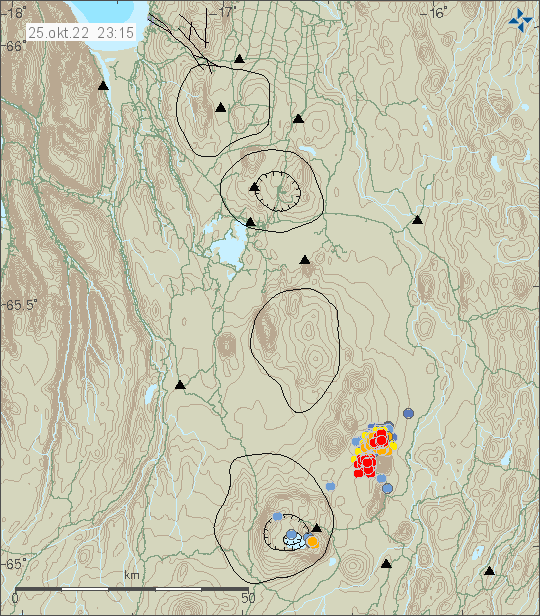
What is going to happen next is impossible to know. An eruption in this area has not happened for at least 12.000 years or even longer. I don’t know if stronger earthquake activity is required for this area for an eruption to happen. It already is rather fractured from older earthquake activity and rift activity, that makes it possible for magma to have easier paths to the surface without much earthquake activity. That is at least one idea on the situation in this area. I might be wrong on this, since I don’t have information on the finer details of the crust around Herðubreið mountain.
Earthquake swarm in west part of Fagradalsfjall volcano
This morning on 23-October-2022 an earthquake swarm took place in west part of Fagradalsfjall volcano. Largest earthquake in this swarm so far had a magnitude of Mw3,0.
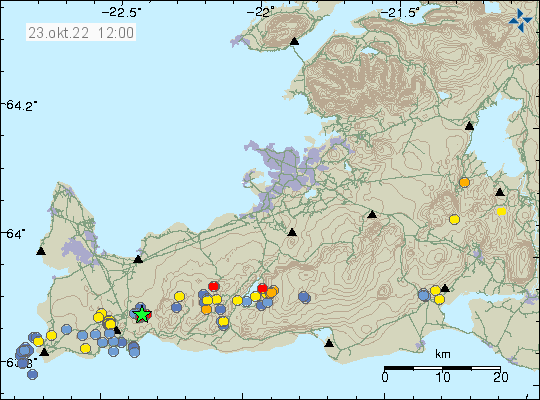
This earthquake activity is the result of magma pushing up into the crust at around 5 km depth. This is not a large dyke intrusion and possibly won’t result in a eruption, unless there’s a sharp increase in earthquake activity and that has happened (the August 2022 eruption started this way). This is currently a situation that requires monitoring for changes. If anything is going to happen is impossible to know.
Fissure opens up in south Grímsfjall volcano (no eruption)
A fissure has opened up in south part of Grímsfjall volcano without erupting at this moment. Pictures show that there’s a lot of hydrothermal activity in this fissure. I can see by the Facebook post (link below) that this is a new fissure in a location that it didn’t exist before. Based on recent history, this strongly suggests that this is the area where next eruption is going to happen in Grímsfjall volcano. When and how big such eruption is going to be is impossible to know. This fissure is located around Lat: 64° 24′ 13,476″ N Lon: 17° 13′ 57,282″ W. It possibly is growing and has made holes in the glacier large enough to swallow large cars.
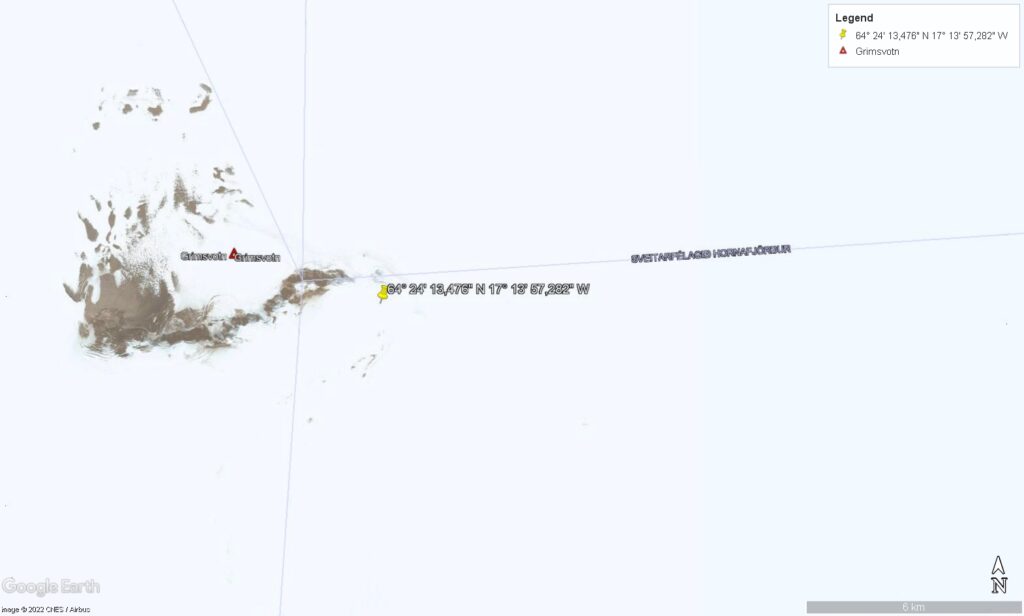
The Facebook post with pictures can be found here. But you might need a Facebook account to view the pictures. I can’t add them here because of copyright.
Earthquake activity has started to increase in Fagradalsfjall and Reykjanes volcanoes
Since yesterday (06-October-2022) the earthquake activity has been increasing in the volcanoes Fagradalsfjall and Reykjanes volcanoes. Please note that Global Volcanism Program has updated the informations regarding Fagradalsfjall mountain and now classifies it as its own volcano, this is after a new report and information from Icelandic Met Office. From now on I am going to use that classification when updating on activity in Fagradalsfjall volcano. I’ll not update older articles (too much work), but this also applies to them as such.
This also means that Fagradalsfjall is a new volcano in Iceland.
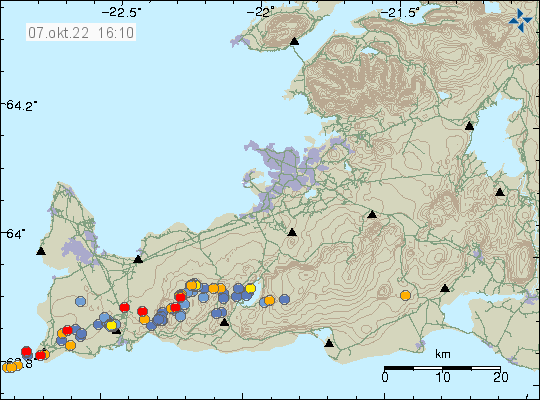
Earthquake activity at start of an eruption cycle in Fagraldsfjall volcano are not large. They grow larger once magma has started to push into the crust, until then the earthquake activity only seems to happens with minor earthquake swarms.
Article updated with new information.
Donations
Please remember to support my work with donations. This month I am really broke. Thanks for the support. 🙂
